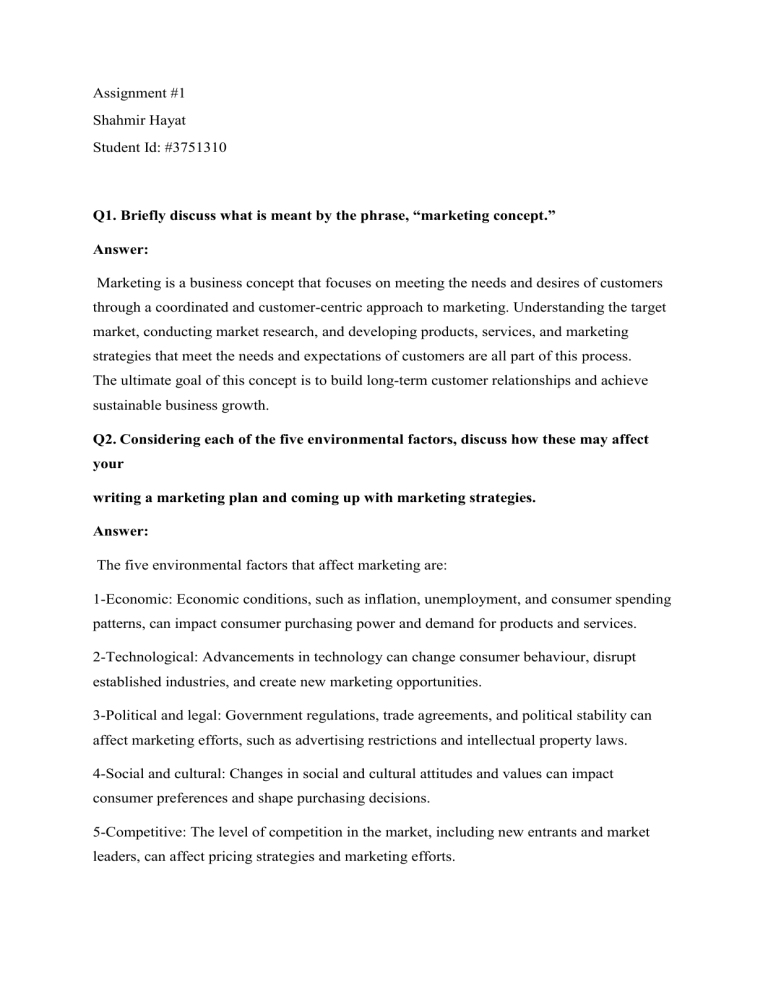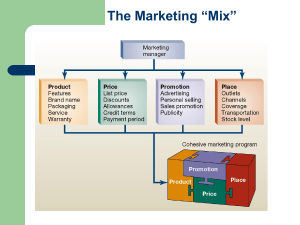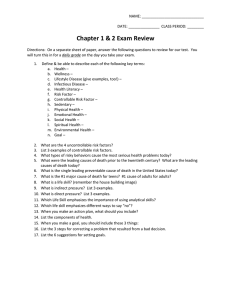
Assignment #1 Shahmir Hayat Student Id: #3751310 Q1. Briefly discuss what is meant by the phrase, “marketing concept.” Answer: Marketing is a business concept that focuses on meeting the needs and desires of customers through a coordinated and customer-centric approach to marketing. Understanding the target market, conducting market research, and developing products, services, and marketing strategies that meet the needs and expectations of customers are all part of this process. The ultimate goal of this concept is to build long-term customer relationships and achieve sustainable business growth. Q2. Considering each of the five environmental factors, discuss how these may affect your writing a marketing plan and coming up with marketing strategies. Answer: The five environmental factors that affect marketing are: 1-Economic: Economic conditions, such as inflation, unemployment, and consumer spending patterns, can impact consumer purchasing power and demand for products and services. 2-Technological: Advancements in technology can change consumer behaviour, disrupt established industries, and create new marketing opportunities. 3-Political and legal: Government regulations, trade agreements, and political stability can affect marketing efforts, such as advertising restrictions and intellectual property laws. 4-Social and cultural: Changes in social and cultural attitudes and values can impact consumer preferences and shape purchasing decisions. 5-Competitive: The level of competition in the market, including new entrants and market leaders, can affect pricing strategies and marketing efforts. Q3. When a company shares its mission statement with its customers, and society in general, what is it that they are hoping to accomplish? Limit your response to 2-3 sentences. Answer: A company shares its mission statement to clearly communicate its purpose and values to its customers and society. By doing so, the company aims to build trust and credibility, differentiate itself from competitors, and establish a clear sense of direction for its operations and decision making. The ultimate goal is to create a positive image and establish a strong, long-lasting relationship with its stakeholders. Q4. A new company from outside NB, wants to break into the Fredericton market space with its products, high-end automotive supplies. This market is highly competitive, say. Identify the market-product strategy they will use. No need to discuss. Answer: This strategy involves identifying and targeting new market segments for its existing products. The company may need to conduct market research and gather information about the Fredericton market to determine the best approach to introduce its products and appeal to the target customers. Q5. Why is a company’s marketing program referred to as “Controllable Factors”? Answer: A company's marketing program is referred to as "Controllable Factors" because these are the elements of the marketing mix that the company has control over and can directly influence. This includes aspects such as product design and features, pricing, promotion, and distribution. By managing these controllable factors, the company can create and implement a marketing plan that effectively reaches its target market and achieves its marketing objectives. Q6. A company wants to go into another country to “set up shop,” and then start selling its products. Which one of the 5 environmental factors is likely to have the largest impact on how this company puts together its marketing program? Hint: There are actually two that you could state here. Answer: In my opinion the two environmental factors that are likely to have the largest impact on the company's marketing program as it enters a new country are: Cultural: Understanding and adapting to the cultural norms, values, and beliefs of the target market is crucial to effectively marketing the company's products. Political/Legal: The company must also be aware of and comply with the political and legal regulations of the new country, including laws and regulations related to advertising, labelling, and product safety.





